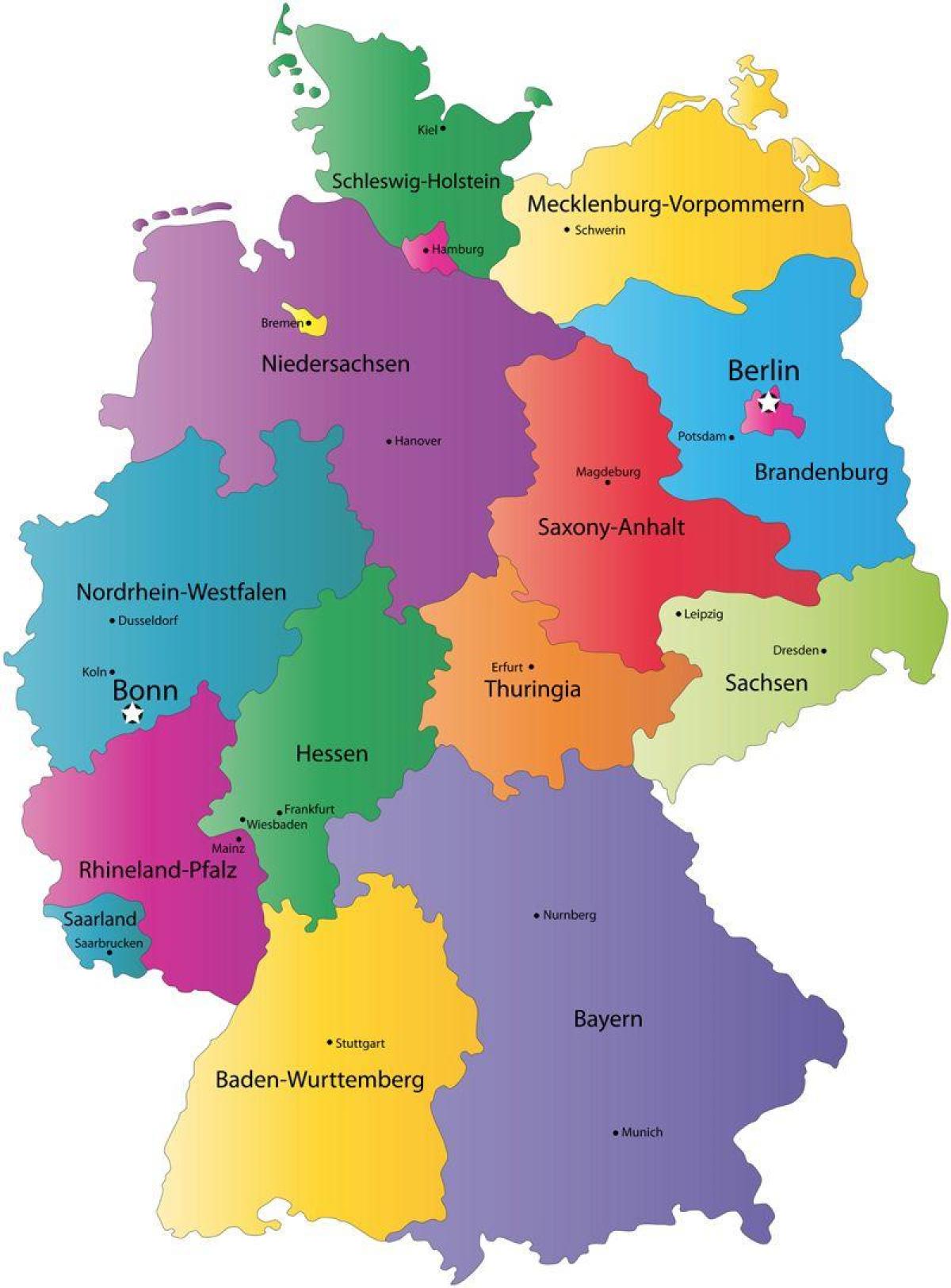search
Germany state map
Map of Germany state. Germany state map (Western Europe - Europe) to print. Germany state map (Western Europe - Europe) to download. Germany is made up of sixteen Länder (singular Land, colloquially [but rarely in a legal context] called Bundesland, for "federated state") which are partly sovereign constituent states of the Federal Republic of Germany. Land literally translates as "country", and constitutionally speaking, they are constituent countries. Often referred to in English by German speakers as "states", the term "Land" (with an uppercase 'L') is used in the official English version of the Basic Law and in UK parliamentary proceedings. Each of the states of Bavaria, Saxony, and Thuringia officially describes itself as a "state" (Staat) and more specifically as a "free state" (Freistaat) as its shown in Germany state map. Berlin, Hamburg and Bremen are frequently called Stadtstaaten (city-states). The remaining 13 states are called Flächenländer (literally: area states).
Most of the states of Germany are governed by a cabinet led by a Ministerpräsident (Minister-President), together with a unicameral legislative body known as the Landtag (State Diet). The states are parliamentary republics and the relationship between their legislative and executive branches mirrors that of the federal system: the legislatures are popularly elected for four or five years (depending on the state), and the Minister-President is then chosen by a majority vote among the Landtag members. The Minister-President appoints a cabinet to run the state agencies and to carry out the executive duties of the state government. The governments in Berlin, Bremen and Hamburg are designated by the term Senate as you can see in Germany state map. In the three free states of Bavaria, Saxony and Thuringia the government is referred to as the State Government (Staatsregierung), and in the other ten states the term Land Government (Landesregierung) is used.
The states of Berlin, Bremen, and Hamburg are governed slightly differently from the other states as its mentioned in Germany state map. In each of those cities, the executive branch consists of a Senate of approximately eight selected by the state parliament; the senators carry out duties equivalent to those of the ministers in the larger states. The equivalent of the Minister-President is the Senatspräsident (President of the Senate) in Bremen, the Erster Bürgermeister (First Mayor) in Hamburg, and the Regierender Bürgermeister (Governing Mayor) in Berlin. The parliament for Berlin is called the Abgeordnetenhaus (House of Representatives), while Bremen and Hamburg both have a Bürgerschaft. The parliaments in the remaining 13 states are referred to as Landtag (State Parliament).
The most populous state of North Rhine-Westphalia is uniquely divided into two area associations (Landschaftsverbände), one for the Rhineland, and one for Westphalia-Lippe. This arrangement was meant to ease the friction caused by uniting the two culturally different regions into a single state after World War II. The Landschaftsverbände now have very little power. The large states of Baden-Württemberg, Bavaria, Hesse, North Rhine-Westphalia and Saxony are divided into governmental districts, or Regierungsbezirke as its mentioned in Germany state map. The Districts of Germany (Kreise) are administrative districts, and every state except the city-states of Berlin, Hamburg and Bremen consists of rural districts (Landkreise), District-free Towns/Cities (Kreisfreie Städte, in Baden-Württemberg also called urban districts, or Stadtkreise), cities that are districts in their own right, or local associations of a special kind (Kommunalverbände besonderer Art).


